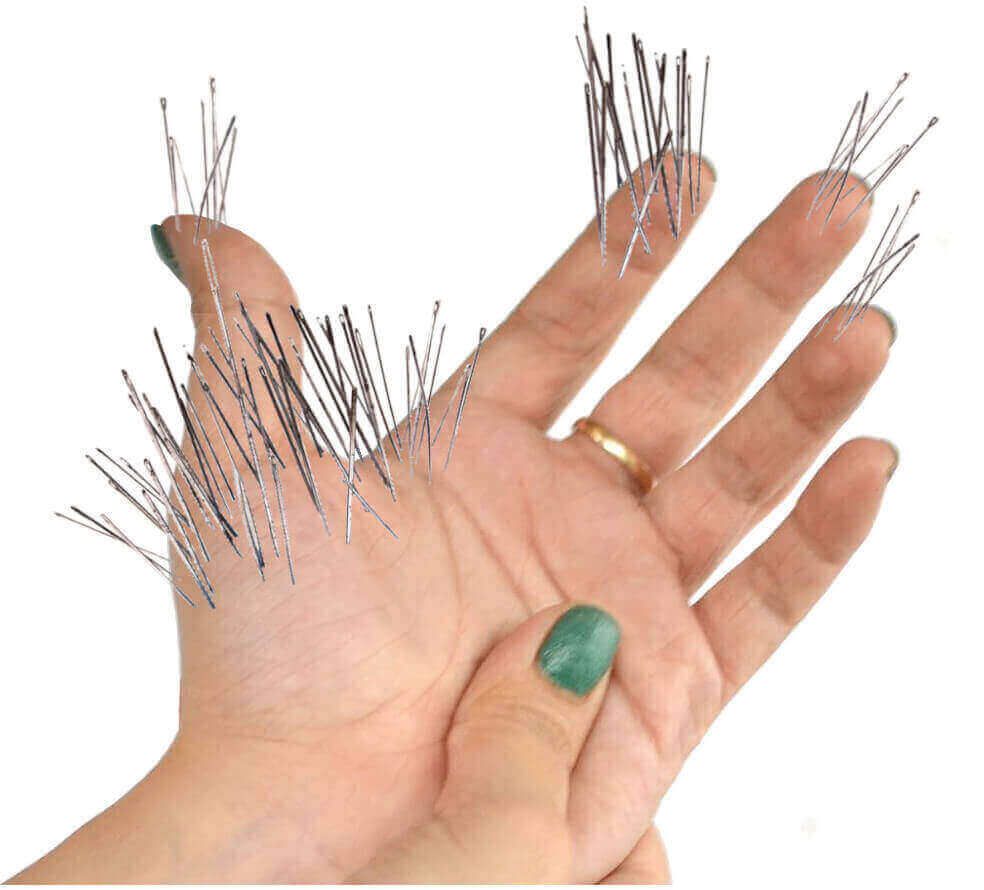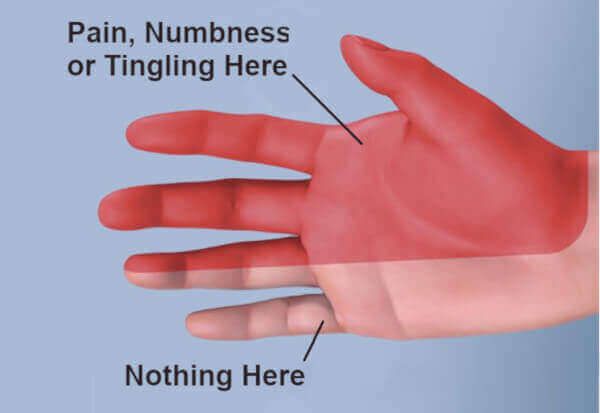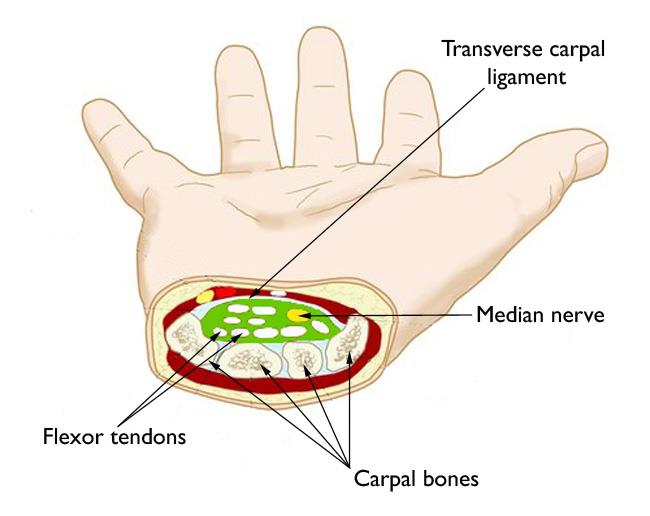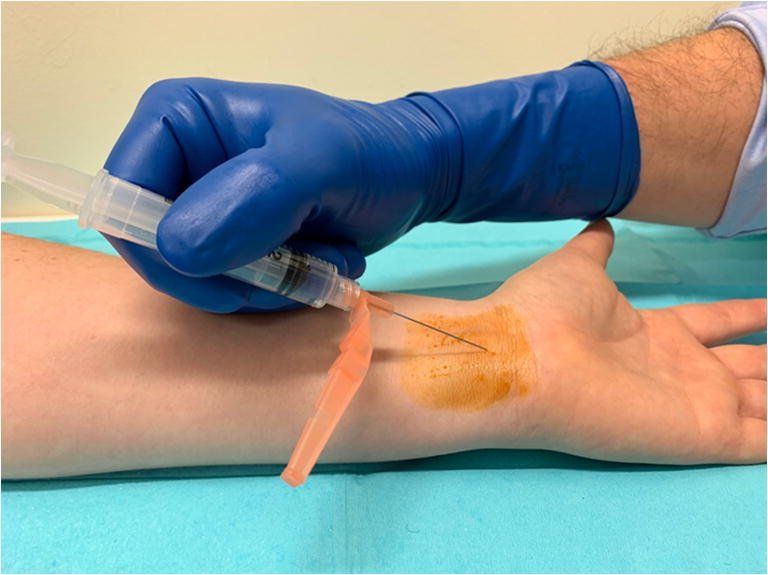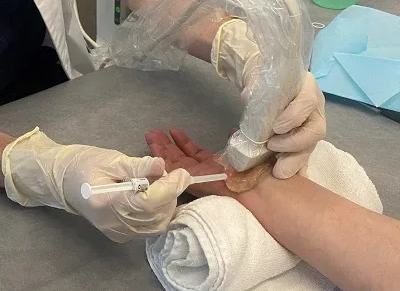If you know what’s triggering your symptoms—typing, gripping, or vibrating tools—try to avoid or limit those motions. Take frequent mini breaks, gently stretch your hands, and use ergonomic equipment when possible.
Signs of Carpal Tunnel Syndrome
From Dr. Z - Carpal tunnel syndrome specialist
Signs of Carpal Tunnel Syndrome: How to Recognize and Treat Them Early
By Dr. M. Zannakis | The CarpalRx
The first signs of carpal tunnel syndrome include pain, numbness, tingling, and weakness in the thumb, index, middle, and ring fingers. Early treatment with stretching, night bracing, and myofascial release can stop symptoms before surgery becomes necessary.
Table of Contents
- Overview
- What is carpal tunnel syndrome?
- How carpal tunnel develops
- Who's most at risk?
- High risk occupations
- Early signs to watch for
- How the condition progresses
- Best treatments for carpal tunnel syndrome
- Rest and activity modification
- Avoidance & rest
- Stretching exercises
- Night bracing
- Myofascial Release Massager
- Steroid injections
- Hydrodissection
- Surgery
- Key takeaways
- FAQs
- About
Overview
The first signs of carpal tunnel syndrome usually appear in the thumb, index, middle, and ring fingers—but never the little finger. These early symptoms often include pain, numbness, tingling, and weakness in your hand or wrist. Because these signs can mimic tendonitis or arthritis, many people don’t realize they actually have carpal tunnel syndrome.
The good news is that most cases can be treated without surgery if caught early.
- Think you have carpal tunnel? Complimentary self-test
- Already know you have carpal tunnel? This Quiz tells you its severity
What is carpal tunnel syndrome?
Carpal tunnel syndrome (or simply “carpal tunnel”) is one of the most common hand conditions in America, affecting more than 5 million people.
It happens when the median nerve, which runs through a narrow passage inside your wrist, becomes compressed or “trapped.” When this nerve is squeezed, it sends distress signals to your brain, resulting in:
- Pain or soreness in the hand and wrist
- Numbness or “pins and needles”
- Burning or itching sensations
- Puffiness or swelling
- Weakness, clumsiness, or loss of dexterity
- Electric-shock sensations when gripping objects
- The pinky finger is never affected because the median nerve doesn’t extend to it. If your pinky is involved, the issue may be tendonitis instead.
How carpal tunnel develops
Carpal tunnel is classified as a repetitive stress injury (RSI). When you repeat forceful or awkward hand motions—typing, gripping tools, or holding a phone—your tendons can swell and inflame inside the wrist. The space is tight, so the swollen tendons press against the median nerve, causing pain, numbness, and tingling.
Think of your wrist like a bundle of straws: the median nerve is the center straw, and the tendons are the ones around it. When those outer “straws” swell, they crush the one in the middle.
Who's most at risk?
Anyone can develop carpal tunnel, but the risk is higher if you:
- Have a family history of carpal tunnel
- Are female or pregnant
- Have diabetes, rheumatoid arthritis, or thyroid problems
- Work with repetitive hand motions
- Have wrist injuries, high blood pressure, or obesity
- Smoke or live a sedentary lifestyle
- Experience chronic emotional stress
High risk occupations
Occupations involving rapid, forceful, or repetitive hand use are the biggest culprits:
Hairdressers • Dental Hygienists • Programmers •
Graphic Designers • Cashiers •
Artists • Construction Workers •
Musicians • Secretaries •
Gamers • Golfers •
Knitters • Assembly Line Workers
Early signs to watch for
At first, carpal tunnel symptoms can be so subtle that many people just think they have tired hands. If you experience any of the following, it’s time to pay attention:
- Tingling, burning, or numbness in the first four fingers
- Electric shocks when gripping objects
- Weakness or frequent dropping of items
- Difficulty buttoning clothes or picking up small objects
- Symptoms that worsen at night or on waking up
Early recognition is key—because the longer you wait, the harder it becomes to reverse.
How the condition progresses
Without treatment, mild carpal tunnel symptoms can progress to severe ones within a few months—though for some people it takes years. Over time, you may notice:
- Constant numbness or tingling
- Loss of grip strength
- Difficulty performing fine motor tasks
- Muscle wasting at the base of the thumb
Catching it early gives you the best chance for full recovery.
Best treatments for carpal tunnel syndrome
1. Rest and activity modification
2. Stretching exercises
3. Night bracing
4. Myofascial release massage
5. Steroid injections
6. Hydrodissection
7. Surgery
Key takeaways
The
first signs of carpal tunnel syndrome—pain, tingling, or numbness—are your body’s way of saying something’s wrong.
If you notice these symptoms,
act early with stretching, night bracing, and myofascial release therapy before the condition worsens.
With the right care, most people can fully recover
without surgery.
FAQs
1. What are the very first signs of carpal tunnel syndrome?
The earliest signs usually include tingling, numbness, or burning in the thumb, index, middle, and ring fingers—often worse at night or when you wake up. Some people also feel weakness or drop objects frequently. Recognizing these symptoms early allows you to treat carpal tunnel before it worsens.
2. Can carpal tunnel syndrome go away on its own?
Mild carpal tunnel symptoms may improve temporarily with rest or stretching, but they rarely go away completely without treatment. Since it’s a progressive condition, early use of night bracing, stretching, and myofascial release therapy can stop it from advancing.
3. When should I see a doctor for carpal tunnel symptoms?
You should seek medical advice if pain, numbness, or tingling lasts more than a few weeks or begins to interfere with daily activities. Persistent symptoms may indicate nerve compression that needs evaluation before lasting damage occurs.


